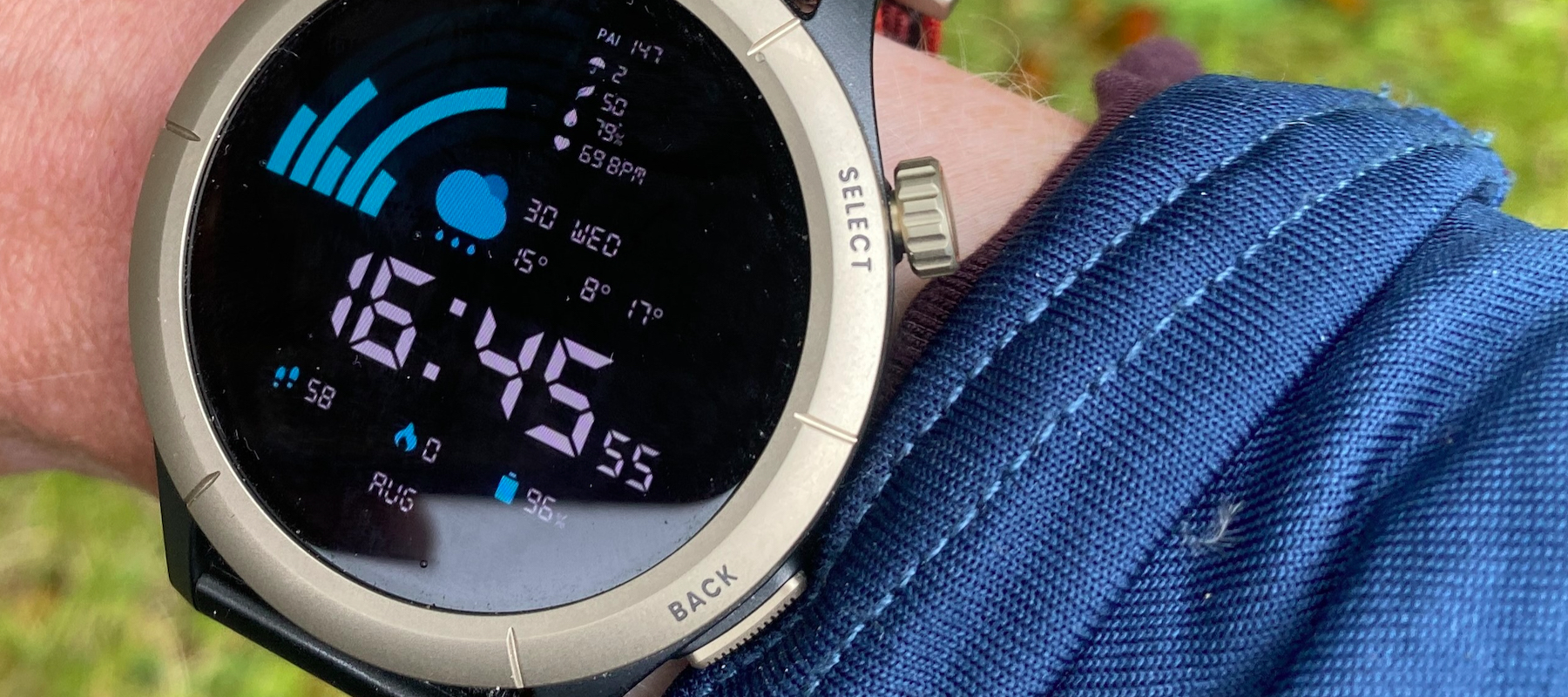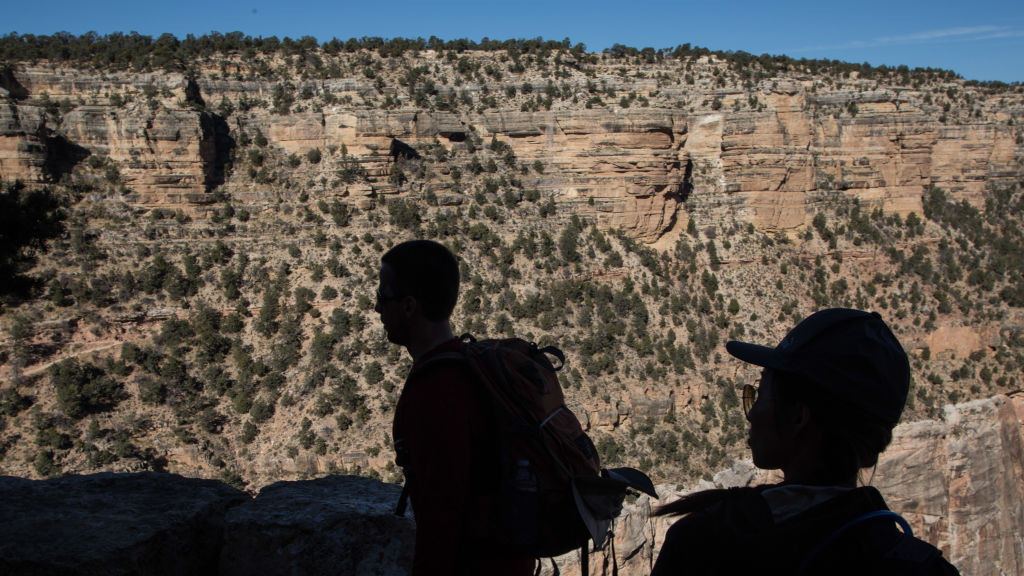Advnture Verdict
The new Amazfit Cheetah Pro GPS watch looks great and has a wealth of details, including Chat AI Coaching, and for under $300. Dig a little deeper and there are many other features that are surprisingly good for the price, although a few notable snags might well send some athletes running straight back to more expensive brands (for the time being).
Pros
- +
Lightweight
- +
Bright display
- +
Useful touchscreen
- +
Numerous functions and sport modes
- +
Price
Cons
- -
Distance accuracy
- -
Elevation accuracy
- -
Inconsistent watch-to-app syncing
- -
Mapping issues
You can trust Advnture
Amazfit Cheetah Pro: first impressions
The Amazfit Cheetah Pro is a smart-looking GPS watch with a bright display. Although it has a large watch face, it’s relatively slim and feels lightweight on the wrist. There’s a smaller, regular watch too – the Amazfit Cheetah (Round) – but that lacks some of the Pro features, such as a speaker.
• List price: $300 (US) / £299.90 (UK)
• Case size: 1.8in x 1.8in x 0.43in / 47mm x 47mm x 10.9mm
• Weight (with fabric strap): 1.5oz / 44g
• Display type: 1.45in / 37mm, 480 x 480 resolution, 331ppi, 1,000nit brightness, AMOLED touchscreen
• Water rating: 50m
• Material: Titanium alloy bezel, fiber-reinforced polymer middle frame (ie, plastic)
• Best use: Running, hiking
The watch is hard-wearing thanks to a titanium alloy bezel and a 'fiber-reinforced polymer middle frame' – in other words, plastic. The face has a Gorilla Glass 3 protective layer to prevent scratches, which is unlikely to be as durable as watches designed with sapphire crystal, but it should prove resistant to many knocks and scratches.
The 22mm wide nylon strap is easy to adjust and allows you to get a comfortable fit. It suits wrists between 150mm and 215mm.
There are only two function buttons: one is a digital crown that you dial and press to select different modes and features, while the other is a press button for going back a screen or feature. There is touchscreen, too, for further ease of selection, and that allows you to select screen menus and scroll.
As is normal with most new sports watches, it takes a while to work out where modes and features are in the watch system. I found it easier to scroll through with the crown dial because the touchscreen is sometimes too sensitive; it kept taking me off into areas I didn’t think I’d selected.
There are dozens of different watch faces to add via the app, and many are free. There are also lots of apps included, such as Amazon Alexa, weather, world clock, alarm and calendar, plus an offline maps download option (more of this later).
In addition, you can install further Zepp apps on the watch, such as a stretching routine, timer and a body temperature recorder; Zepp is a digital health management solution developed by Amazfit’s parent company.
Battery is an area that many runners will be keen to know about. Amazfit states the battery will offer 14 days of basic use; up to 24 days in battery saver mode; up to 45 days in clock mode; up to seven days of heavy use (I’m not sure what heavy use means, exactly); up to 26 hours in 'accuracy' GPS mode; up to 44 hours in automatic GPS mode; and up to 54 hours in power-saving GPS mode.
This amounts to a lot of different battery scenarios and requires a lot of fiddling about with watch settings to make accurate assessments. For this review, I kept track of the watch in typical usage, which was using it as a watch and doing shorter daily activities, such as an hour’s run. I also used the watch on longer mountain outings in accuracy GPS mode.
There are more than 150 sports modes and functions, plus plenty of physiological metrics, such performance readiness”, recovery and VO2 max, as well as 'workout impact'. It also has AI run coaching, music capability, voice recording and many more features.
Amazfit Cheetah Pro: in the field
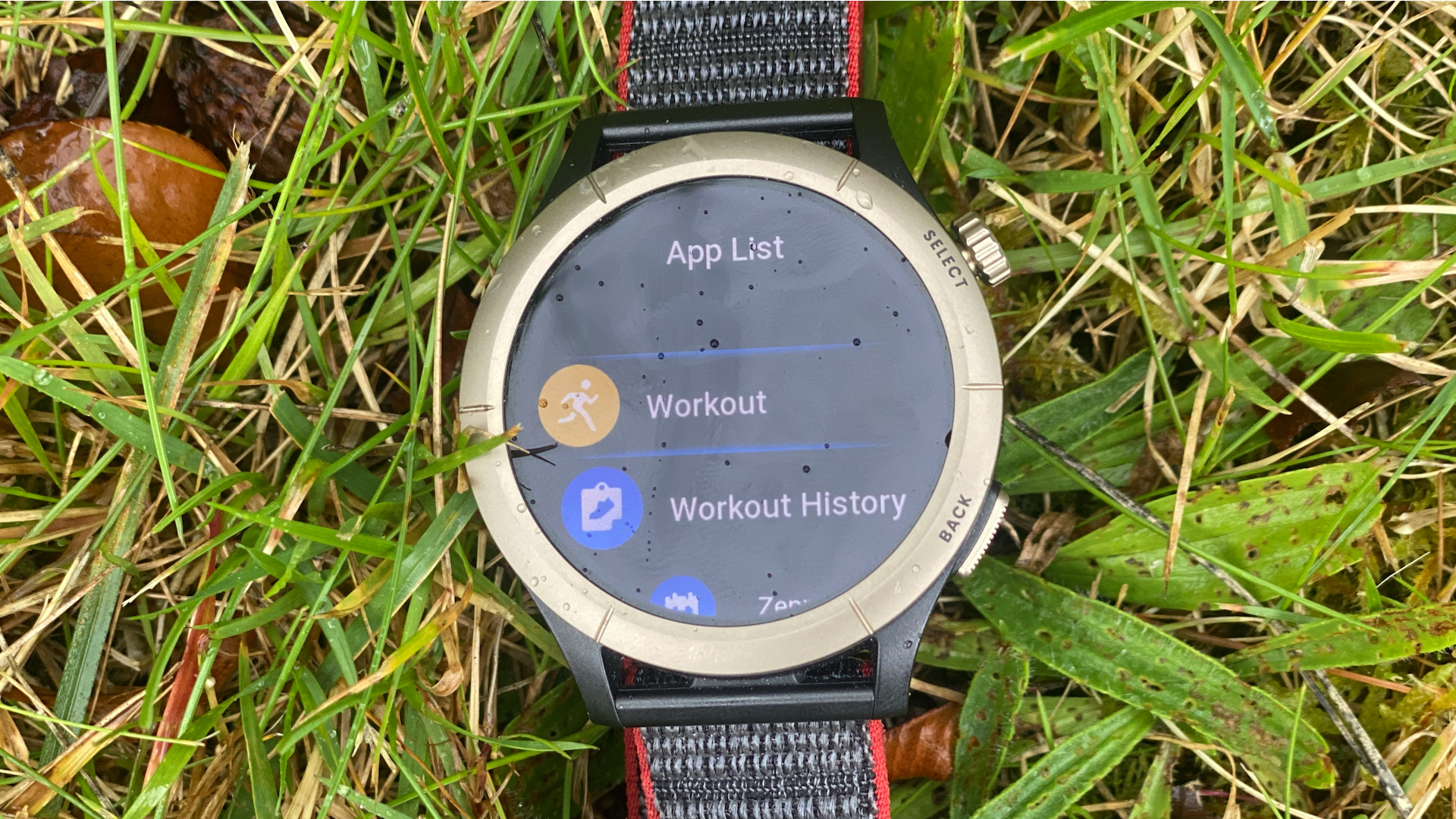
The Amazfit Cheetah Pro GPS watch is easy enough to use – you simply scroll to your chosen work out and start. There are many workout choices and I question the need for so many modes, including hunting, ATV and “off-road motorcycle”. You can even log your “artistic swimming” training, 16 different dance modes, 12 “combat” modes and 31 “ball” workouts. How about tracking your game of chess or poker, too? Do we really need all these modes I wonder?
It’s possible to set up different data screens for each activity so that you can see and track what you’re most interested in. For example, when mountain walking I want to know the time elapsed, distance, elevation gain, altitude, etc. Strangely, when I set this up, the time showed seemed to be the time I was moving rather than total time elapsed. This could be my mistake with the setup but I couldn’t see how to change it.
When starting a workout, the watch asks you to wait 10 seconds while it finds a satellite position. While 10 seconds might not seem like a long time, you do need to think ahead if you’re heading out with friends and don’t want to be left 10 seconds behind.
The battery life was okay although this is where the watch lags behind other brands, such as Garmin and Coros. Used as a watch, the battery lasts more than a week but not 14 days. If you want the watch to track activities with GPS, the battery starts to drain quite quickly. I used the watch in 'accuracy' GPS mode for different trail and mountain outings. On two of the mountain hikes of around six to seven hours and with plenty of elevation, the battery drained more than 50%. This doesn’t tally with the expected 44 hours.
I needed to charge the Amazfit watch much more regularly than other sports watches such as Garmin Enduro and that seems quite old-fashioned these days because I’m used to a watch that last for weeks.
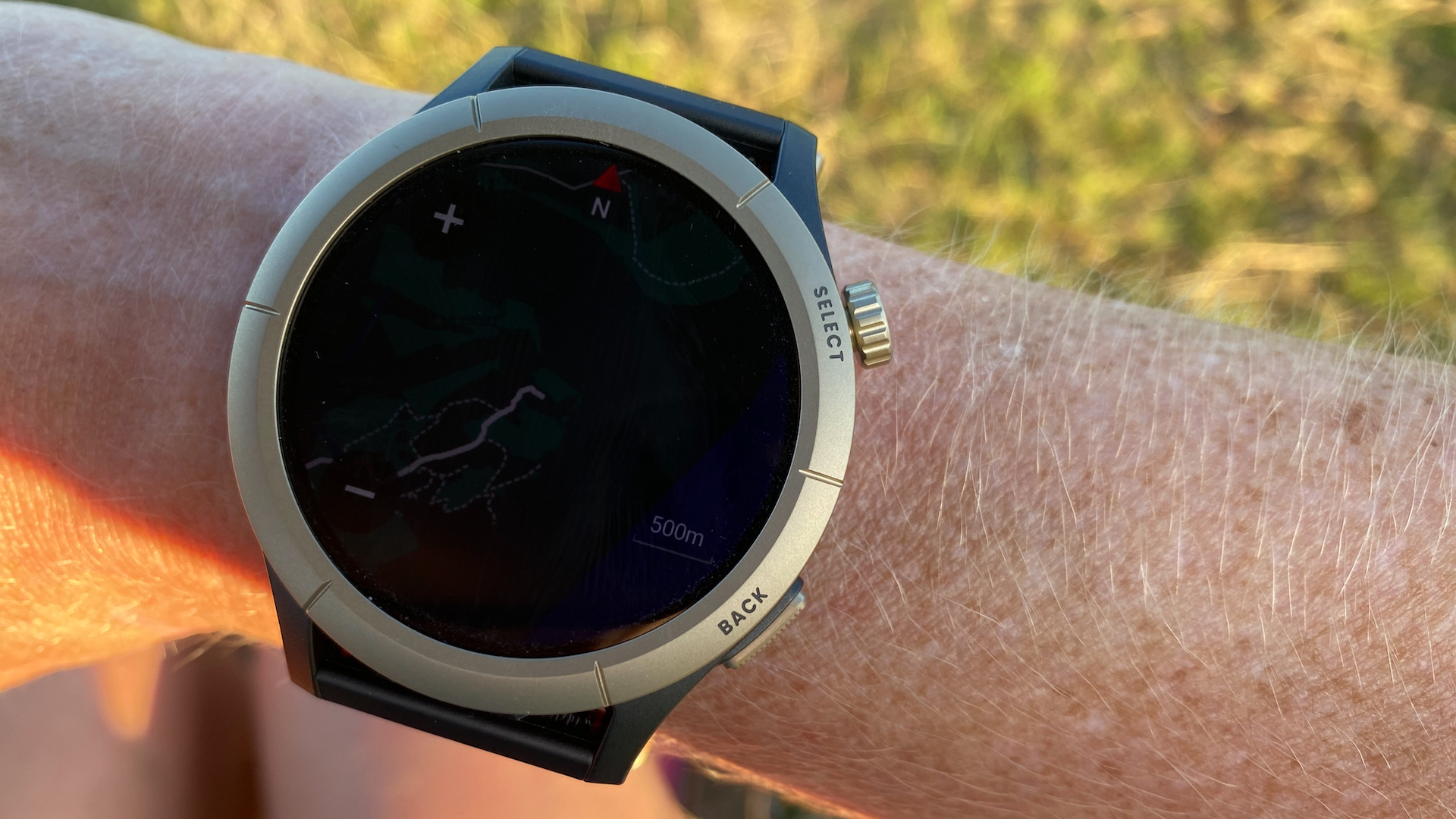
GPS data recording accuracy
Let’s take a look at GPS data recording accuracy. I compared this to a number of other watch brands, including Coros, Garmin and Suunto. Apparently, “The Amazfit Cheetah Pro can pick up L1 and L5 satellite signals for pinpoint dual-band GPS tracking, and supports six satellite positioning systems for reliable coverage2”. You might imagine this is very accurate.
The activities recorded on the Cheetah Pro showed a little less distance than on other comparable watches and mostly the same elevation. The distance was generally around 8% shorter (this was over a long hike of about six hours), while on most occasions the elevation was around the same as recorded on other watches, although sometimes up to 100m more. I can’t tell you if the other watches are more accurate than the AmazFit or vice versa, but there were consistent differences with the Chetah Pro regularly showing extra elevation and reduced distance.
A strange glitch occurs when the Zepp app syncs with the Strava app (many athletes keep records of their activities on Strava). Strava showed up to 33% less elevation gain. I Googled this issue and I discovered that Strava might not record the same as your watch if there is “bad GPS data”. However, my friends all did the same and synced their watch data with Strava and it showed the same as their watches. When I use my Garmin Enduro, the watch data also matches the Strava data on most occasions. This is an issue with the Cheetah Pro that more serious athletes might find very annoying.
The heart-rate tracking also seems inaccurate. It is tracked via a wrist monitor and these are never as accurate as a chest strap but usually fine for keeping tabs on like-for-like rates each day and comparing across activities. The Amazfit tracks my heart rate at 20 beats a minute faster than my Garmin Enduro, which tracks at some 10 beats per minute higher than actual heart rate at rest.
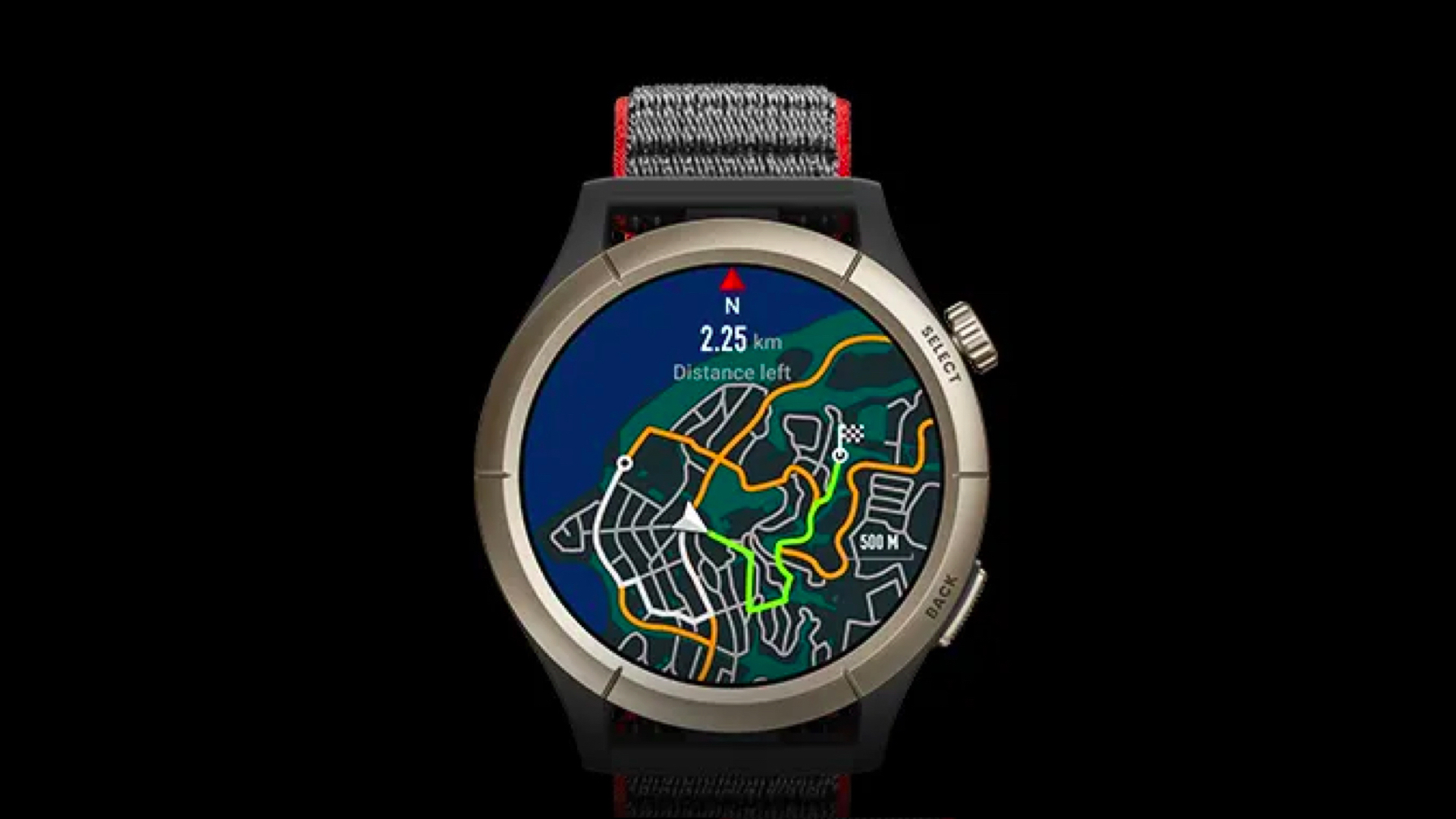
Maps
The maps are glitchy overall but fairly useful if you can get them loaded and working. You can only download one section of map via the app and using wifi. The sections are large, from 45km x 28km to 315km x 200km (this is almost the whole of northern Scotland).
On the first go, I found it tricky to get the wifi to sync – it took about seven tries – but after this, syncing was much more straightforward. For larger downloads, it can take up to five minutes for syncing.
You can also upload a GPX route file via the app. This is fairly straightforward and similar to other brands such as Garmin.
To use the route and map you just look for navigation in your workout choice. However, it is only available on some of the workout settings such as trail running and walking. It’s not an OS map or Google Map, but a very basic map; you can see land and water, roads and your breadcrumb route but no feature contours. I question the usefulness of this in rural areas. I have a breadcrumb-only feature on my Garmin Enduro watch and it’s of limited use but still good to have. The Cheetah Pro is the same but with more colors for land and water.
The maps are slow to react when I tried to enlarge or reduce them and it’s very slow to move around on the map. The maps seemed a bit glitchy, as if they were taking up too much brain space on the watch. Also, when I tried to exit the map and go to another screen, the watch stalled and hiccupped but eventually did as I wanted.
In the middle of this, the watch music came on. This wasn’t the first time it had happened randomly. I spent a frustrating few minutes trying to exit the map turn off the workout and stop the music.
All of which left me wondering if the watch capacity is a bit too limited for the map upload.
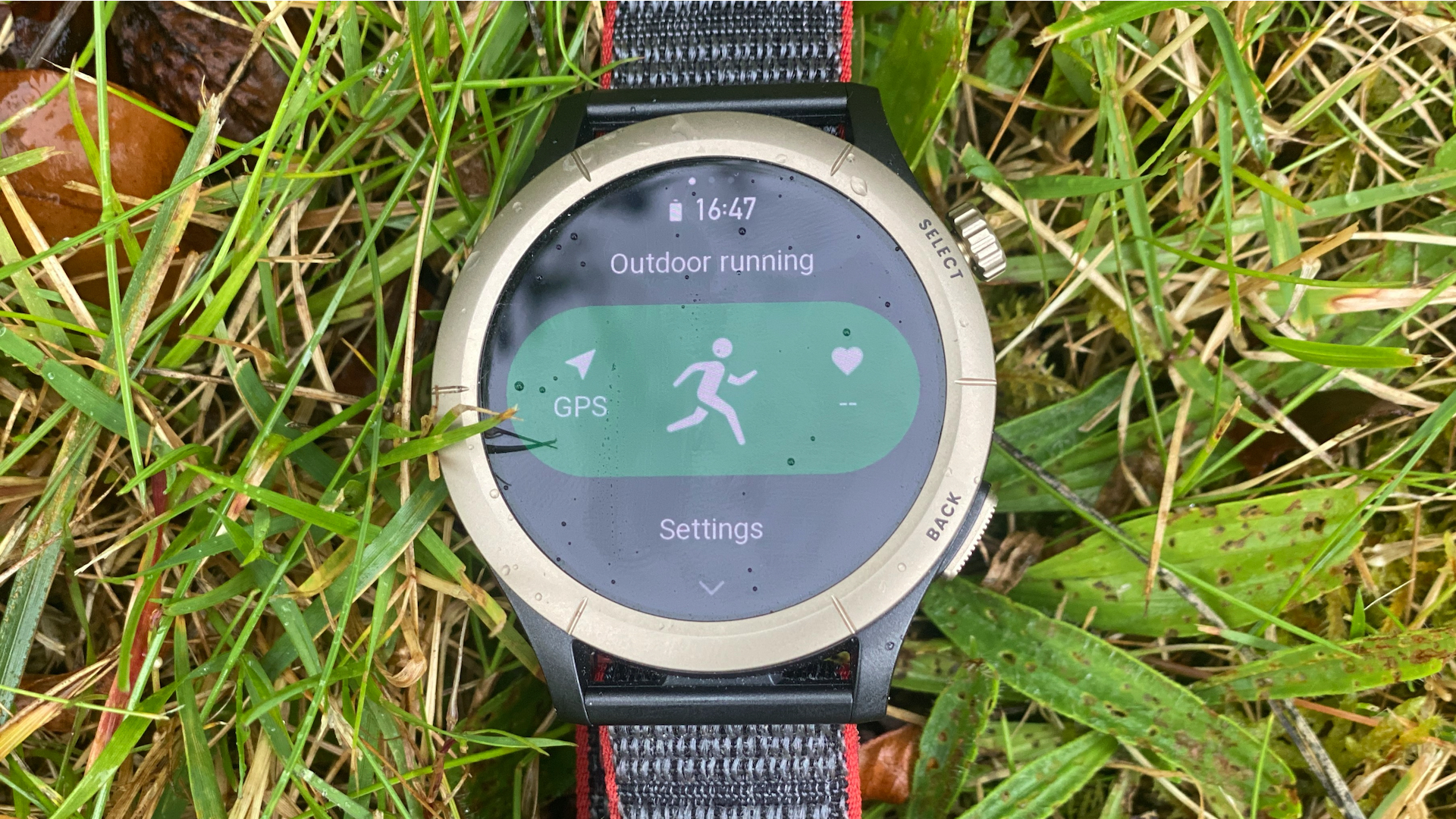
This brings me to another issue with the Amazfit Cheetah Pro. Sometimes it automatically syncs with the phone app and sometimes it needs to be prompted to do so. I confess this could be something to do with my home broadband but overall it seems to be a bit hit and miss.
The Zepp app does offer plenty of linked data information. This is not as all-encompassing as Garmin Connect, for example, but offers enough information to cover all the essentials of training, such as pace, speed, cadence, elevation, distance, calories, heart rate, etc.
Strangely, the elevation information on the app is very lacking and inaccurate. On one hike where I had a total elevation gain of more than 1,400m according to my watch, the app data showed elevation gain as 447m and max elevation as 193m, when in fact I spent most of my time well above 700m.
There is also a reading for PAI, which is claimed to give an overall physical condition rating. The PAI apparently reveals whether your health and exercise – or lack of – will contribute to a higher risk of hypertension, heart diseases and Type 2 diabetes. I took all this information with a pinch of salt, especially when it gave me a predicted age of 22 and I am aged 55! I am fit but not that fit!
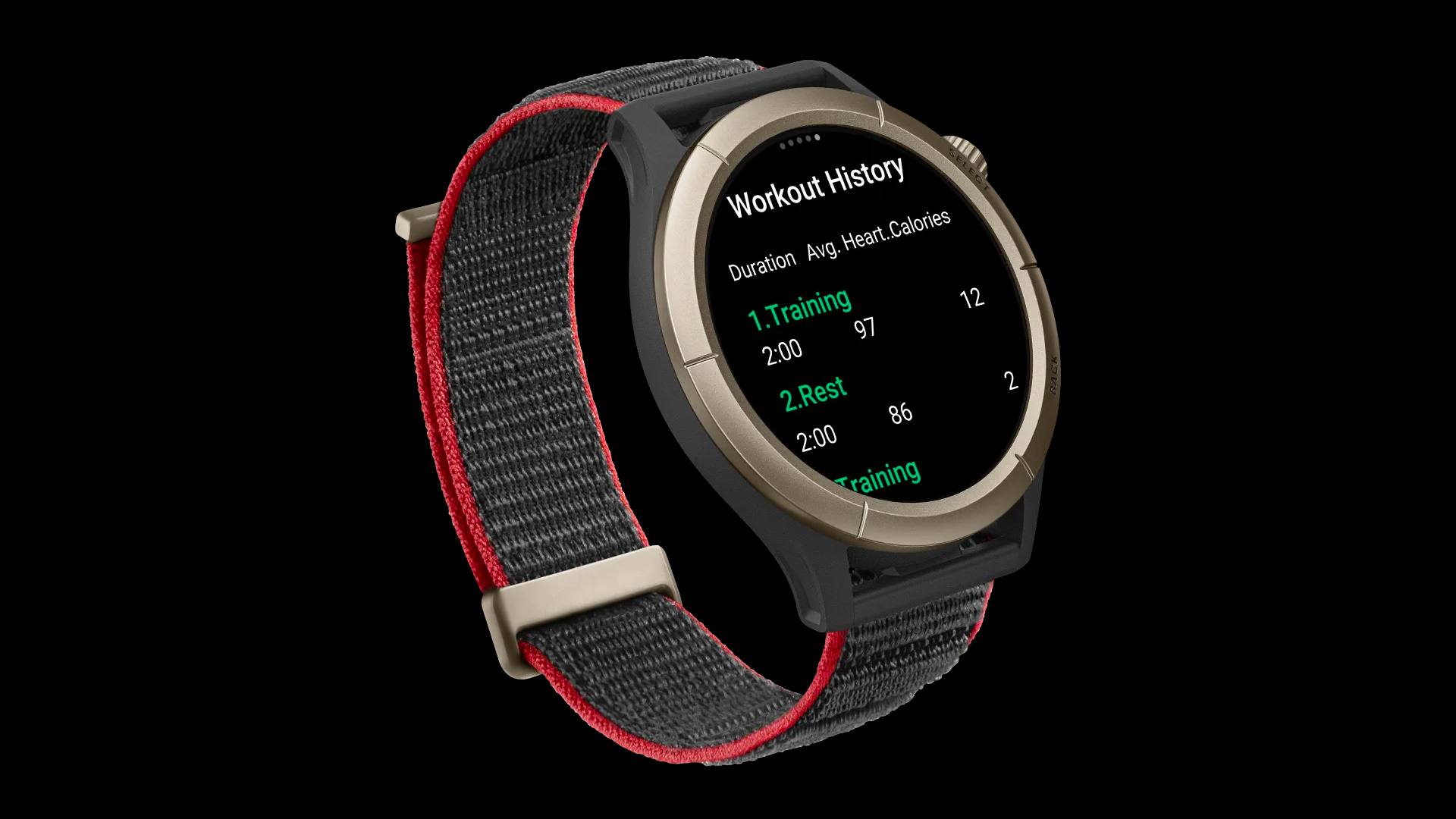
By default, the Amazfit Cheetah Pro speaks to you, telling you what you’re doing during an activity. I had to mute this on the app because it was very annoying to me and my fellow runners and walkers. I guess this would be more useful if you are following a training session, in which case it would be helpful to have a voice telling you what to do.
The watch apparently records sleep time but it wasn’t very accurate and appeared to tell me I had been asleep when I was awake at night.
Another small negative is that when the fabric strap gets wet, it stays wet for a while. I imagine you could change the strap for a silicone style one if you wanted.
The Amazfit Cheetah Pro GPS can take Bluetooth phone calls, utilize voice assistant and give you access to Alexa. I set up the Alexa access via a long hold on the crown dial. Alexa was a bit glitchy at first but answered most of my simpler questions. I liked the weather report, which was fairly accurate although it did say there was a flood alert in place nearby, which I found strange for such a sunny and dry day. When I asked Alexa where I live, the reply was, “I am a bit concerned you don’t know this.” This is a great reply!
There is also music storage on the Cheetah Pro, which allows you to transfer songs and listen to them using a pair of Bluetooth running headphones.
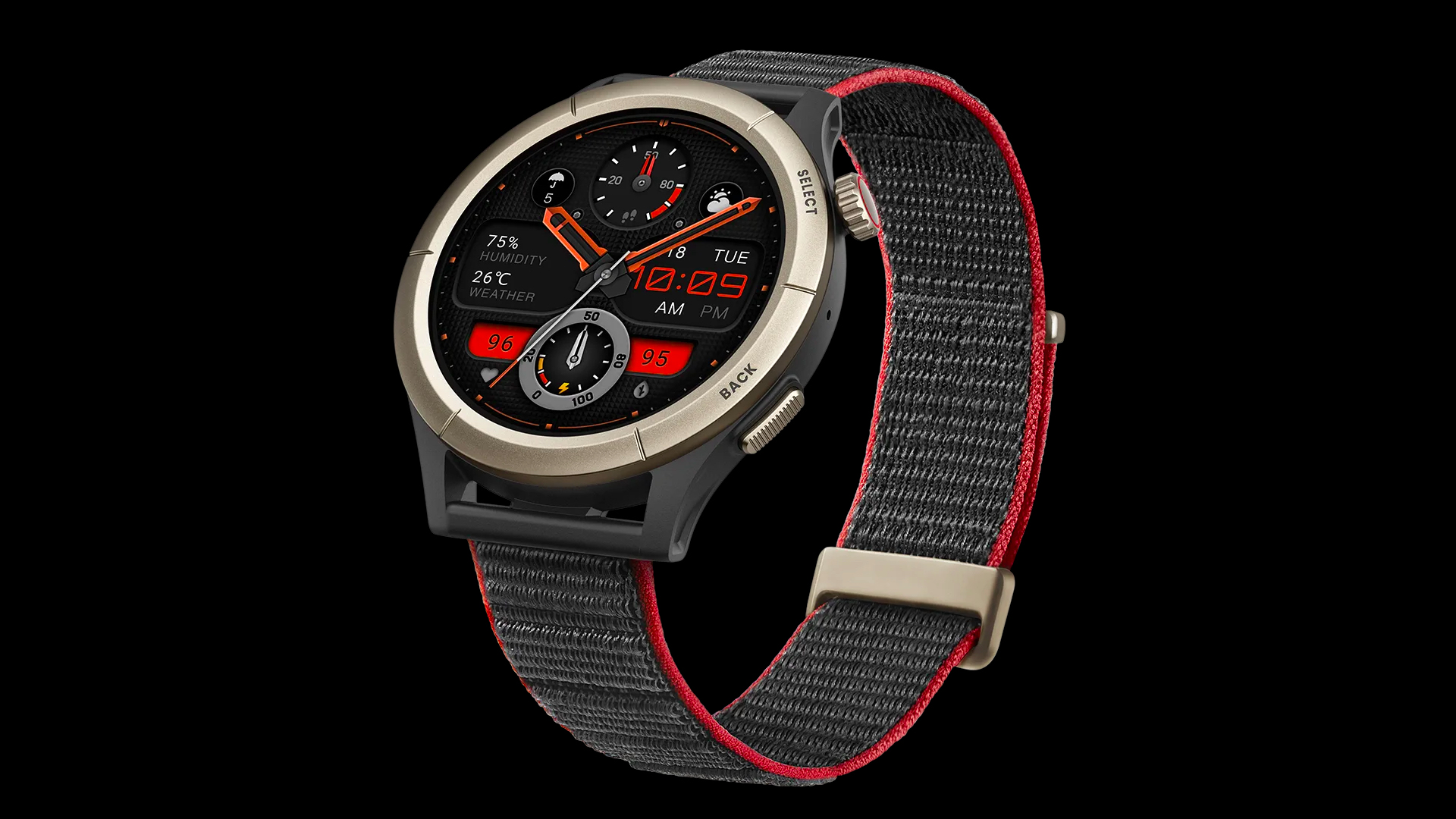
In addition, there’s Zepp Coach AI, which provides workouts based on your recent activities and current fitness level. You have to okay a disclaimer about health and exercise; after this the 'coach' creates training plans for you.
I was interested in how this works. Apparently, the Zepp Coach AI Chat feature “uses the power of generative AI and applied large language model (LLM) to decode your fitness queries. Whether you’re wondering about the best exercises to support your running goals or seeking advice on improving your marathon time, ask the Zepp Coach AI Chat via voice or typed command, and it will understand your natural language descriptions and deliver answers that hit the bullseye for all your sports-related questions.”
In layman’s terms, the app’s AI coach will design a training plan tailored to your goals and personal circumstances. For example, you can tell it your goal, such as a 5k, 10k, half-marathon or marathon; your hoped for time; your available time, etc. The 'coach' bases your aspirations on the available data you have already recorded and also on what it gleans through AI.
I tried a plan for run a 10k in 45 minutes within a six-week programme. The AI coach told me this wasn’t realistic based on the information it had on me. This is fair enough, actually, because the runs I’d recorded while testing the watch were not fast and I don’t have much of a history of fast 10k running according to the app.
Conclusion
The Amazfit Cheetah Pro GPS is a very affordable GPS watch, although it might not suit all athletes. If you’re looking for a very long-lasting battery then you’ll want to stick with other brands, such as Garmin or Corus. If you are happy to recharge the watch at least once a week and before – and after – longer outings then it might still be for you.
The watch records a little short on distance but appears to be quite accurate for overall elevation, except you need to check the watch data for the latter information and not the app data. When syncing data with Strava, for example, some GPS info is lost for some reason.
You can use the watch for more than just running, such as to keep a check on incoming SMS and emails, bluetooth calling, Alexis and voice memos. There are tons of different looks for the watch, as well as apps to upload.
The AI coaching is better than I thought it would be and offers fairly sensible advice and plans depending on the information it has stored on your health, fitness and current training.
Overall, this is a brand worth keeping an eye on because I’m expecting they’ll listen to feedback and bring out another, updated GPS sports watch with even better uses, accuracy and features.

Fiona Russell is a widely published adventure journalist and blogger, better known as Fiona Outdoors. She is based in Scotland and is an all-round outdoors enthusiast with favorite activities including trail running, mountain walking, mountain biking, road cycling, triathlon and skiing (both downhill and backcountry). Aside from her own adventures, Fiona's biggest aim is to inspire others to enjoy getting outside and exploring, especially through her writing. She is also rarely seen without a running skort! Find out more at Fiona Outdoors.
